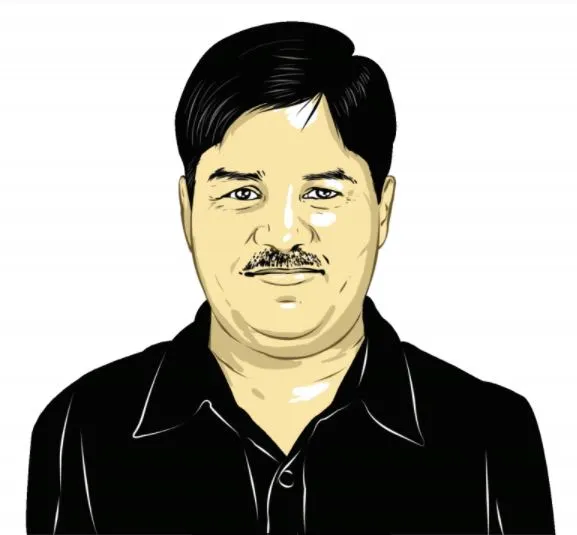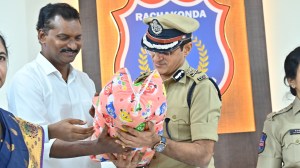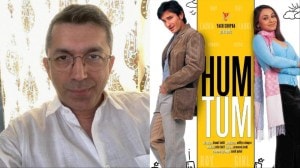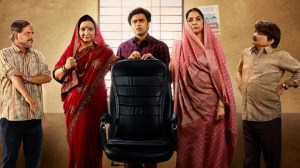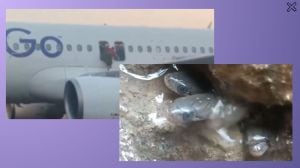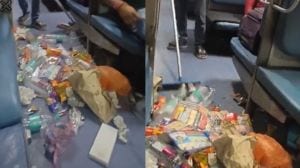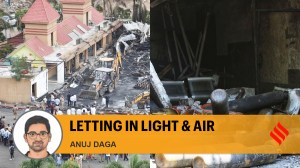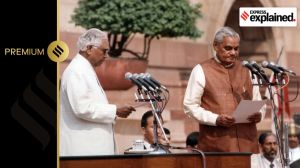- India
- International
What was the Baroda Dynamite Case, in which George Fernandes was sent to Tihar jail?
The firebrand leader fought the 1977 Lok Sabha election for the Muzaffarpur seat from jail, and won by a huge margin. Here's the story of his arrest and electoral triumph
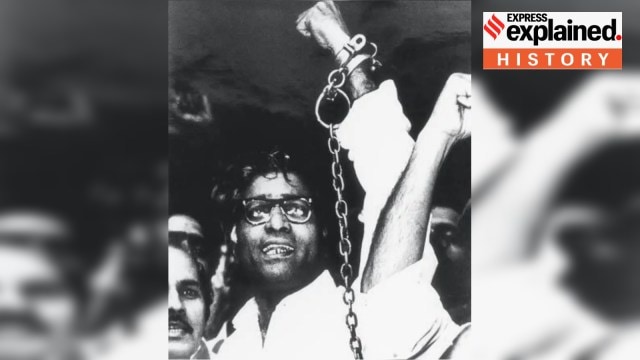 George Fernandes, after his arrest in the Baroda Dynamite case. (Wikimedia Commons)
George Fernandes, after his arrest in the Baroda Dynamite case. (Wikimedia Commons)While hearing arguments on Tuesday (May 7) on granting interim bail to Delhi Chief Minister Arvind Kejriwal to enable him to campaign in the ongoing Lok Sabha election, the Supreme Court mentioned George Fernandes — recalling in passing that he had contested an election from jail, and had won by a huge margin.
There is no similarity between the cases of George and Kejriwal beyond the fact that both politicians went to jail. Unlike George, Kejriwal is not a candidate in the ongoing election; and unlike Kejriwal, George did not hold government office when he was arrested. The nature of allegations against them are also entirely dissimilar.
But George, who passed away in 2019 at the age of 88, is a remarkable figure in the political history of India. This is the story of his winning the Lok Sabha election from jail.
George Fernandes, the man
A firebrand trade union leader who was originally from Mangalore (Mangaluru), George moved to Bombay (Mumbai), and won his first Lok Sabha election from the Bombay (South) constituency in 1967 on Samyukta Socialist Party (SSP) ticket, defeating Congress stalwart S K Patil. However, in the 1971 election, George came third at the same seat.
In 1977, he won the Muzaffarpur seat in Bihar on a Janata Party ticket — this was the election that he contested while being in jail. George went on to represent Muzaffarpur in Lok Sabha on Janata Dal tickets in 1989 and 1991, and Nalanda, also in Bihar, on Samata Party tickets in 1996, 1998, and 1999. He returned to Muzaffarpur on a Janata Dal (United) ticket in 2004, and won.

After being denied the party’s nomination in 2009, George contested as an Independent and lost; however, Nitish Kumar, the JD(U) chief, sent him to Rajya Sabha that same year. George served in the Upper House until 2010. He passed away after a prolonged illness on January 29, 2019.
A fearless activist, George was behind India’s biggest railway strike in 1974. In politics, he was active until 2004. He was the convener of the original National Democratic Alliance (NDA), and Defence Minister in the government of Prime Minister Atal Bihari Vajpayee.
Fighting election from jail
George went underground when the Emergency was declared on June 25, 1975, but he was arrested in Calcutta (Kolkata) on June 10, 1976. He was charged in the infamous Baroda Dynamite Case (details in next section), and lodged in Tihar jail in Delhi.
The Emergency was lifted in 1977, and elections were announced. George was in favour of boycotting the polls, but was persuaded by Morarji Desai, who went on to become India’s first non-Congress Prime Minister, to contest.
While George himself remained confined to Tihar, hundreds of his friends and followers from various states, including trade unionists from Bombay, students and Lohiaite teachers from Delhi University, and youth supporters from all over the country fanned out in his constituency to campaign. His mother Alice Fernandes, and brother Lawrence Fernandes, too joined the campaign.
Out of the 5.12 lakh votes polled, George got 3.96 lakh, which was more than 78%, while Congress candidate Nitishwer Prasad Singh got only a little more than 12%. George became a minister in Desai’s government, and was given charge first of Communications, and then of Industry.
The Baroda Dynamite Case
George, along with two dozen others — including then Rajya Sabha member Viren J Shah (who went on to serve as Governor of West Bengal), the Bombay socialist leader GG Parikh, then reporter of The Indian Express in Ahmedabad Kirit Bhat, and then reporter of The Times of India in Baroda K Vikram Rao — was booked for waging war against the state.
According to the charge sheet, police found 836 sticks of dynamite and fuse wires from the premises of a private transporter in Vadodara on March 8-9, 1976. The CBI took over the investigation on March 23, 1976. Two cases were registered by Delhi Police, which too, claimed to have recovered explosives, and three cases were registered by Bombay Police in connection with an explosion at a railway bridge in that city. All these cases too, were transferred to the CBI. Together, these cases constituted the Baroda Dynamite Case.
CBI filed a charge sheet on September 23, 1976. George was accused of procuring large quantities of dynamite and accessories with the objective of overawing the government by blowing up road and rail bridges, disrupting communications, and creating conditions of chaos and anarchy.
The trial was held at the court of the Chief Metropolitan Magistrate in Tis Hazari in Delhi. On the dates of hearing, police would bring George before the court in handcuffs. An iconic picture of George shows him in handcuffs.
Efforts to withdraw the case began immediately after the Janata Party government took oath on March 24, 1977. By then, George had already been released. K Vikram Rao, one of George’s co-accused, told The Indian Express on Wednesday: “We were released on March 22 (1977), the day the results of the Rae Bareli Lok Sabha seat was declared (and Indira Gandhi was defeated).”
On March 26, an application for withdrawal of the case was moved in the court of Chief Metropolitan Magistrate M Shamim, which said that “in public interest and changed circumstances, the Central Government has desired to withdraw from the prosecution of all the accused”. The magistrate agreed to allow the withdrawal of the case.
However, two criminal revision petitions were filed in Delhi High Court — by Bal Krishna Gupta on March 31, 1977, and R K Jain on May 13, 1977 — against the order. Both petitions were dismissed by the High Court.
Subsequently, a Special Leave Petition was filed in the Supreme Court against the High Court order. On May 3, 1980, the top court dismissed the petition, along with other similar petitions.
More Explained
EXPRESS OPINION
May 28: Latest News
- 01
- 02
- 03
- 04
- 05


